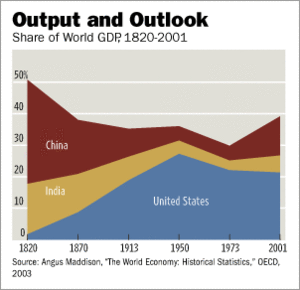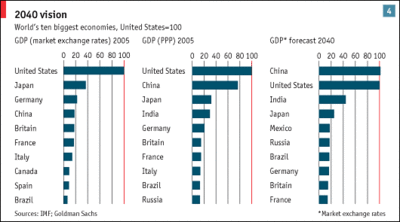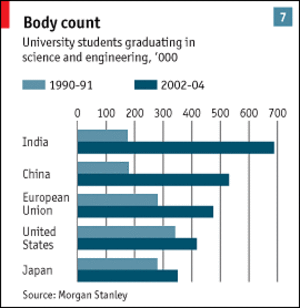 How about getting a QA job in Bangalore? Take a look at this line on a Saturday afternoon. There are over 1000 people in front of Xora’s (a fund investment) office. Sanjay Shirole, CEO of Xora, definitely runs a hot company in the wireless GPS space, but when I saw this picture I couldn’t have imagined that the people had come to do walk-in interviews for a couple of QA positions and not for autographs. Not only is it incredibly competitive and tough to get a job in India as there are lots of candidates, but Sanjay pointed out the tremendous strain it puts on Xora to find and qualify the right person. By the way, Xora did end up finding a couple of strong candidates from the crowd so it was well worth the effort. Hat tip to Sanjay and my partner Ned Carlson for sharing this with me.
How about getting a QA job in Bangalore? Take a look at this line on a Saturday afternoon. There are over 1000 people in front of Xora’s (a fund investment) office. Sanjay Shirole, CEO of Xora, definitely runs a hot company in the wireless GPS space, but when I saw this picture I couldn’t have imagined that the people had come to do walk-in interviews for a couple of QA positions and not for autographs. Not only is it incredibly competitive and tough to get a job in India as there are lots of candidates, but Sanjay pointed out the tremendous strain it puts on Xora to find and qualify the right person. By the way, Xora did end up finding a couple of strong candidates from the crowd so it was well worth the effort. Hat tip to Sanjay and my partner Ned Carlson for sharing this with me.
Category: Globalization
The next tech powerhouse?
In a recent Barron’s article on Cisco titled "Getting the World WIred (sorry, sub required)" is an interesting comment from CEO John Chambers:
While these new technologies are giving Cisco’s current customers reason to upgrade, Cisco also is seeing growth of nearly 50% a year in its sale of networking systems in emerging markets like Saudi Arabia. That growth results from sales investments Cisco made in the past couple of years, just as it had done previously in India and China. A large sales force of Cisco representatives is now making the case for oil-rich nations to invest in networks as a way to improve health care in those countries and create high-value jobs. Today such countries represent 10% of Cisco’s sales, but Chambers thinks they will contribute 30% to 50% of future growth.
Given the amount of money the Middle East is printing from oil, the fact that the oil reserves will not last forever, and that the Middle East is investing heavily in infrastructure (I believe most of the world’s cranes are in China and the Middle East), I would not be surprised to see this area become a strong player in technology. Give it time, and Cisco is spot on for making the investment and bringing these countries state of the art infrastructure. It is not a coincidence that a couple of the fund’s portfolio companies have found fertile ground and great sales opportunities in the EMEA region.
Globalization and the world economy
I remember 2 years ago the brouhaha over globalization and how every startup needed to adapt or it would die. I truly am a fervent believer in globalization and how offshoring some development work can make a ton of sense from a cost and time advantage (24×7). As I look across our portfolio, what is interesting is that while the comparative advantage of developing in say, India, was once 4 to 1 it is looking like it is more 2:1 or lower as you factor in costs like management overhead, travel, etc. In addition, the companies that actually took advantage of offshore development and were successful were the ones that opened their own wholly-owned Indian subsidiaries. Not only did these companies have their own subsidiaries in India, but they also sent a core team of engineers from the US to open the office, train the staff, manage the team, and provide real incentives like stock options. The portfolio companies that did not fare so well were the ones that had offshore development shops work for them and while the output was fine, it was quite disruptive as the turnover of personnel was quite high. In the end, all I can say is that offshore development for your company is not a panacea, and that you should only do it if it makes sense for your company (read an earlier post for more).
Given that I am quite interested in globalization, I wanted to share with you a few graphs that I saw this week that were pretty impactful for me. First, I recently discovered this piece that Mike Milken wrote for the Wall Street Journal a couple of days ago. I found it on Greg Mankiw’s blog, an economics professor at Harvard and also the Chairman of the Council of Economic Advisors (he is also a former Professor of mine).
 Like Greg, I want to highlight Michael ‘s thoughts on the graph.
Like Greg, I want to highlight Michael ‘s thoughts on the graph.
"China and India combined to produce nearly half the world’s economic output in 1820 compared to just 1.8% for the U.S. Our remarkable growth since 1820 has benefited from democratic institutions, a belief in capitalism, private property rights, an entrepreneurial culture, abundant resources, openness to foreign investment, the best universities, immigration and relatively transparent markets."
In addition, here are two other graphs from this week’s Economist that summarize what the world may look like in the future. I encourage you to read the in-depth survey as it provides some great historical context as well as trends we should watch in the future.
 Tying into Michael Milken’s graph of the world economy in the past is this Goldman Sachs one showing who the economic leaders will be in the future – notice China as #1 and India as #3 by 2040. You can already see from Michael’s graph above that from 1973 to 2001 the US share was diminishing as India and China were growing rapidly.
Tying into Michael Milken’s graph of the world economy in the past is this Goldman Sachs one showing who the economic leaders will be in the future – notice China as #1 and India as #3 by 2040. You can already see from Michael’s graph above that from 1973 to 2001 the US share was diminishing as India and China were growing rapidly.
The last graph is quite interesting as it relates to us technology folks. We have always thought of India and China as places to offshore low-level development work. Yes, alot of that has already been done but what is alarming is what may happen in the future as the comparative advantage that India and China have over us in terms of college graduates in science and math is overwhelming.  Not every one of those graduates according to the McKinsey Global Institute is up to par with the standards that we have in the U.S. (10% in China and 25% in India) but that is clearly changing.
Not every one of those graduates according to the McKinsey Global Institute is up to par with the standards that we have in the U.S. (10% in China and 25% in India) but that is clearly changing.
So what does this mean for us. I am still processing this and would love to hear your thoughts. In my humble opinion, I believe it means that first and foremost, we should continue to fight and compete by stressing education. We cannot fall behind here as it is one of our most important assets. Secondly, I always like to say that the trend is your friend so be on the outlook for how to leverage this labor and talent pool in your current company. It could mean offshoring work (only if you and your team can handle it) or creating new companies that enable global labor arbitrage and collaboration leveraging the Internet (wiki opportunities, open source plays, communications like Gizmo Project, one of our investments). Finally, personally and professionally, pay attention to investment opportunities. There are no secrets why alot of VCs are starting funds in India and China because as these emerging economies grow, income levels rise and with that comes more disposable cash to buy products and services. Like I mention above, it could also mean finding opportunities that leverage the Internet and take advantage of the global talent pool (Logoworks – not one of mine but a great company). From a personal perspective, I have been building a nice allocation in an emerging markets index fund for the last 3 years. Trust me, it is not for the faint of heart and it will be quite a bumpy and volatile ride but looking ahead it is hard to argue with the economic growth in the emerging markets.
Successful offshore practices – let them work on your crown jewels!
The buzz around offshoring has certainly died down over the last year. For a period of time, you could not pick up a magazine or read a newspaper without a lead article on the dangers of offshoring. I had dinner tonight with a portfolio company CEO who has managed to shift most of his resources to India. Today the company has almost 100 employees in India, over 30 of whom have been with the company for 5+ years. Even more impressive is that the employee churn has been pretty low. When I asked him about the secret of success, he said it was quite easy.
"Let them work on your crown jewels."
In other words, most software development opportunities are with consulting firms where employees work on a project basis. So these jobs are usually fleeting and never last very long. Other software jobs are body-for-hire which, once again, is not that interesting and does not provide real upside for the developer. Many of the better opportunities have developers maintaining existing code, fixing bugs, and doing low-level programming. By making a strategic decision early to let the developers in India work on the core technology this company has been able to thrive and prosper and turn its offshore team into a real strength. All of the main architecture and design is still done in the US, but all of the development is done offshore. The other reason why this has worked so well is because the company also made a conscious decision to send over our existing VP Engineering and a few other key developers to seed and build the team in India. It is a wholly owned subsidiary and the employees all work for the company. The startup costs are obviously higher to do this but if you are looking to do offshore development and do it successfully I seriously urge you to consider building your own team if you can find the right lead project/eng. development manager. I have seen way too many companies fail in offshore development trying to just work with consulting firms as inevitably the churn and training costs end up being quite high. In addition, to make it really work, let your team build real product, work on new technology, and not just maintain old code.
Venture capital in China
I recently caught up with my friend Derek Sulger, founder of Linktone (Nasdaq: LTON) and current founder and CFO of Smartpay, a Paypal-like play in China (I really like what Derek is doing with this one-no credit in China, use the mobile phones for debiting from bank accounts). Derek and I are college friends and we certainly have come a long way from college when he finds my email on Google under a heading "Geeking out with Ed Sim" (thanks to Jeff Clavier for this one!) because his mobile device with all of his data on it is cracked on his flight from China. That being said, we had a great chat on VC in China and opportunities he sees there.
First, from his perspective, he would rather pick one or two ventures at a time then spread out investments VC style. If you think about it, there have only been around 7 or 8 internet-type companies that have gone public in China since the last bubble in the US (Linktone is one of those) when the Sina.coms were out in the market. Given that, he would rather pick a couple sure bets and really work with them cradle to grave. It is also tough to have any real governance and control of an investment by just sitting on a board in China, especially if you are monitoring a deal from thousands of miles away. Secondly, he said it is tough to find good, experienced talent. That is one of his gaiting factors in ramping up his ventures. Finally, from an investment perspective, he would rather go consumer than enterprise. His first business was a systems integration play which spawned Linktone and Smartpay. He said it was difficult because the private companies you are selling to are really quasi-government agencies. It is tough to get paid and very tough to protect your intellectual property. At least on the consumer side, if you price your product or service appropriately, you can build a real PAYING user base and protect yourself from competitive threats with your base of subscribers. Look at the history of China going from Boeing to the automakers like GM which did joint ventures with companies in China only to have their IP recreated and used against them. I am sure GM could have protected themselves by charging less for their Buicks!
So there you have it from an experienced entrepreneur in China. His thoughts make a ton of sense.
Moving up the food chain
Normally I do not read too much into press releases on industry hires but I found this one interesting on many levels. Intel, a tremendous brand in its own right, hired a marketing executive from Samsung, a Korean company. Most people assume that the US’ competitive advantage over the rest of the world lies in design, innovation, and branding. We can outsource manufacturing and development to countries like China, Korea, and India to create great products at lower prices. However, what we need to understand is that these countries are not just content in producing widgets. They, too, have aspirations in moving up the product food chain to develop their own brands, design their own products, and manufacture them. So for me it was quite ironic to see one of the world’s best brands, Intel, hire the marketing exec from Samsung, where just five years ago it had no brand and was just seen as a low cost producer. What a tremendous job Samsung has done in just a short period of time. As you can see from Samsung’s numbers, it has done an excellent job moving up the food chain, innovating, and creating a brand. This culminated in Intel hiring a Samsung executive. This is just the beginning. In the WSJ today, there was a great front page article (sub required) on Chinese telecom equipment companies penetrating worldwide markets. Once again, this is another example that the very advantages that the US has in innovation, design, and brand may be threatened in the long term, especially if we do not pay attention.
Global expansion
We are truly living in a global world these days. Many startups I meet with today are either taking advantage of offshore development or have pushed up plans to expand sales internationally. Given the broader scope of this trend, I have changed the category name Offshore Resources to represent a broader theme, Globalization. While taking advantage of a global economy is a great idea, it certainly can be disastrous for some companies. You can’t just take your existing blueprint for sales and R&D and adopt it in a foreign country. I mean didn’t we learn our lesson from the world expansion of the British empire? So if you are thinking about expanding globally, I suggest reading Jeff Nolan’s post on making sure you have local market knowledge. There are a number of great examples and issues that he outlines.
While you may think VCs only want to hear about your company using offshore resources and selling internationally, I am oftentimes underwhelmed by the naivete of some of the entrepreneurs about how and why they are expanding globally. For example, before doing business in other countries, I suggest making sure that you take care of your home market first. The US is a large market, the customers are closer, and the cost of doing business is lower. In fact, if you can have your first customer within driving distance that is ideal. Trust me, customers love knowing that you can show up at a moment’s notice to solve any problem. It is easier to keep a customer happy when you can show up in a half hour than in 24 hours. On the offshore development side, just think through why you are offshoring work and what kind of work you plan on doing in a foreign country. Over time, I have increasingly come to the conclusion that if you are going to do it, make the investment upfront to hire your own team. While the idea of using consultants to get to market quicker sounds attractive, the churn rate is way too high. The time and effort you put forth to train consultants becomes wasted when they jump ship and find a higher paying opportunity.
The increased cost of offshore development in India
In our weekly partner’s meeting yesterday, we ended up in a discussion about the progression of offshore development in a variety of portfolio companies. In the end, the companies that were doing the best job with development were the ones that had their own operations offshore. While a couple of our companies chose to use consulting partners to begin with due to lower upfront costs and better time to market, we found that over time (the last 2 years) that employee churn is becoming a huge problem in these consulting companies and making us less productive in the long run. For example, one portfolio company had 5 consultants from India trained for 3 months on the product. 6 months later only 2 are left. On the other hand, our companies that have their own people on the ground are better able to manage their teams and motivate offshore employees through competitive compensation and a career path. So while we are increasingly going to make sure we create our own teams in India versus use consultants, we will still not be immune to churn and the competitive nature of the economy.
The great aspect of doing business in India is that you have lots of talent. The problem is that offshore development has become so popular that the cost of doing business has increased since wages have been bid up and since employees have many job options. In the past year, SAP and Oracle and a number of other large companies have opened up offices in India or made larger commitments to developing products offshore. What does that mean for us in the future? While it is not as cost effective to do development in India today versus 2-3 years ago due to supply and demand factors, I still believe that having an offshore strategy is important as our portfolio companies still can do alot more with less. However, in the long run, given the competitiveness and cost increase of doing business in India, I am sure that many companies will increasingly look to other locales with strong talent and less competition like Belarus, Romania, Argentina, Russia, and China. I am already seeing that happen.
The Globalization of Education
Jerry Colonna and I had an interesting dialogue on the topic of utilizing offshore resources. In the end, Jerry and I advocated that education is the key to long-term success for the US. Offshoring of jobs will continue to happen, and it makes sense economically. However, in order to maintain our lead in the US, we need to make sure to educate our children and workforce to move up the value chain so we can continue to innovate, design, create, and own our core Intellectual Property. I just had an interesting discussion with another PC Forum attendee about his daughter’s college application process. He mentioned that it is more competitive than ever and that leading universities had to turn down many applicants with great grades and scores. In his discussion with a leader at an IVY League university, he mentioned that the university could fill its entering class with students from mainland China alone without any adjustments to its admissions process. So China also clearly sees the value of Intellectual Property, and it will be interesting to see how this race to educate our societies develops. Of course, this raises larger questions about how our colleges and universities create the right geographic diversity amongst its student population. However this debate evolves, what is great about this country is that we do educate and train many foreign-born students who contribute immensely to our economy and help us maintain our competitive edge.
Lunch with Pat Cox-thoughts on offshoring
On Wednesday, I had the pleasure of attending a small group lunch in honor of Pat Cox, President of the EU Parliament. It was quite a treat as I got to hear his viewpoint on Spain, terrorism, immigration, and offshoring amongst other things. Since I tend not to write about politics, I thought I would share Pat’s thoughts on offshoring. As you know, in the US, there is increasing political pressure on offshoring and a movement to put legislation in place to prevent and slow this down. Offshoring is certainly a key issue in the EU as well, and Pat offered an interesting and growing perspective on offshoring and how to deal with it. Pat believes strongly that it is not about protecting jobs but protecting people. The jobs will come and go but to the extent we can protect people and train them and teach new skills then we will all be better off in the long run. I certainly share this viewpoint and would like all of us to figure out how we can contribute to this line of thought.
If you want to stay on top of all things offshore, I suggest that you visit a new site called Offshoreupdate.com. The site is currently an aggregator of offshore outsourcing stories, but it will soon begin publishing news stories. This is a perfect example of what Jeff Jarvis calls “microcontent.” Throw up a blog, some links, and some Google Adsense and see where it takes you.